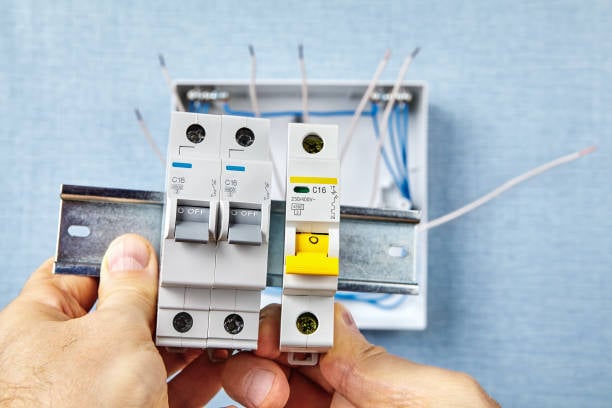Air Switches: An Essential Component of Many Industries
When it comes to automation and control systems, air switches play a crucial role. These devices, also known as pneumatic switches, are used in a wide range of industries and applications. In this comprehensive guide, we will explore what air switches are, how they work, and their various uses. Whether you're an engineer, a DIY enthusiast, or simply curious about the world of automation, this article is for you.
Understanding the Basics: What is an Air Switch?
An air switch is a type of electrical switch that uses air pressure to control the flow of electricity. It consists of a diaphragm or piston mechanism, which responds to changes in air pressure to open or close an electrical circuit. Unlike traditional mechanical switches that rely on physical contact, air switches offer several advantages such as enhanced safety, durability, and versatility.
How Does an Air Switch Work?
At its core, an air switch operates on the principle of air pressure differentials. When the pressure on one side of the diaphragm or piston changes, it causes a mechanical motion that activates the switch. This change in pressure can be achieved through various means, such as manual or automatic actuation, using compressed air or gas, or even utilizing the movement of fluids. The versatility of air switches allows them to be adapted to different control systems and applications.
The Many Applications of Air Switches
Air switches find application in numerous industries and sectors, thanks to their unique characteristics. Let's take a closer look at some of the most common uses of air switches:
1. HVAC Systems
Air switches are widely used in heating, ventilation, and air conditioning (HVAC) systems. They help control the operation of various components, such as fans, dampers, and valves. By using air pressure as the control mechanism, HVAC systems can efficiently regulate temperature, airflow, and overall comfort.
2. Industrial Automation
In industrial settings, air switches are essential for automation and control. They can be found in manufacturing plants, assembly lines, and even heavy machinery. Air switches enable precise control over the operation of motors, solenoids, and other electrical devices, ensuring safe and efficient processes.
3. Waste Water Treatment
Air switches play a crucial role in waste water treatment facilities. They are used to control pumps, valves, and other equipment involved in the treatment process. The ability of air switches to operate in harsh environments and resist corrosion makes them ideal for such demanding applications.
4. Medical Equipment
Medical devices often rely on air switches for their operation. From patient monitoring systems to diagnostic equipment, air switches are used to activate various functions and ensure proper functioning. The reliability and precision of air switches make them a preferred choice for critical medical applications.
5. Pool and Spa Controls
Ever wondered how the buttons on your pool or spa control panel work? Chances are, they are powered by air switches. These switches are used to control the operation of pumps, jets, and other features, providing a convenient and safe user experience.
6. Automotive Industry
In the automotive industry, air switches find application in various systems and components. They are used to control airbags, seat belts, power windows, and more. The ability of air switches to withstand harsh environments and extreme temperatures ensures reliable performance in automotive applications.
7. Food Processing
Food processing plants rely on air switches for the control of conveyors, mixers, and other machinery. The hygienic design and robustness of air switches make them suitable for use in such environments, where cleanliness and reliability are of utmost importance.
8. Energy Management Systems
Air switches are used in energy management systems to control the flow of electricity and optimize energy consumption. They can be integrated into smart home systems, allowing users to remotely control lighting, appliances, and other electrical devices.
9. Safety Interlocks
In safety-critical applications, air switches are often used as part of interlock systems. These systems ensure that certain conditions are met before allowing a process to proceed, preventing accidents or equipment damage. Air switches provide a reliable and fail-safe method for implementing safety interlocks.
10. Robotics and Automation
Robots and automated systems rely on air switches for precise control and operation. Whether it's the activation of robot arms, grippers, or sensors, air switches enable the seamless integration of different components in complex automation processes.
Conclusion
Air switches are versatile and essential components in various industries and applications. From HVAC systems to industrial automation and medical equipment, their ability to control electrical circuits using air pressure makes them a preferred choice for many engineers and manufacturers. Understanding the uses and capabilities of air switches can help you appreciate the role they play in our modern world of automation and control systems.

